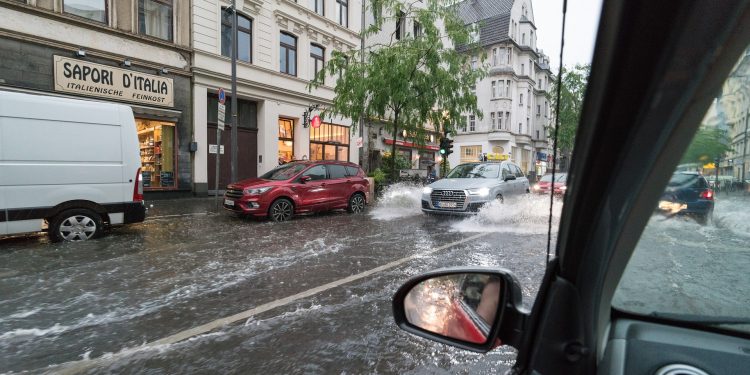Climate Change is Real: Chennai Faces Floods Again

Last week, Chennai faced heavy downpour which disturbed the daily life of people.
On October 30th, the North East monsoon lashed the city. Most of the schools were shut and employers of the private sector were allo.wed to work from home.
Introduction
Dejavu: The recent rains in Chennai brought back painful memories of the floods of 2015 that left more than 500 dead and over 18 lakh people displaced with estimates of damages and losses ranging from nearly ₹200 billion (US$3 billion) to over ₹1 trillion (US$16 billion).It was the heaviest rainfall faced by the city in 100 years and was one of the costliest disasters of the year.
Some areas like Sidco Nagar in the West of Chennai did not get affected by last week monsoon since the residents started clearing their drain and were prepared to face. But places which were built over water bodies like T.Nagar was affected.
Why did this happen again? Didn’t we learn anything from last time?
Natural/Man Made: As human beings, we are experts at blaming others. If we run out of humans to point to we blame nature/god. The floods in Houston, Mumbai and Chennai are examples of a bad combination of climate change and ill-advised land-use change. It is shocking that none seems to have taught people a lesson other than considering disasters as the new norm.
It is no brainer that the increasing population and lack of available land is one of the major reasons.A study done by Chennai-based research group Care Earth revealed how the city’s built-up area grew nine-fold – from 47sq km in 1980 to 402sq km in 2012 – even while the area under wetlands declined from 186sq km to 71sq km during the same period.A parliamentary committee that enquired into the cause of the 2015 floods was categorical in its report that “encroachment of lakes and riverbeds played a major role in causing massive floods in Chennai”.
‘Between 1996 and 2015, more than 1,000 acres of the wetland was allegedly illegally diverted to accommodate industrial installations belonging to state-owned companies, including a large port and several coal-fired power plants.In June 2017, authorities allegedly violated laws, relied on fraudulent maps and allowed a proposal by state-owned Kamarajar Port to convert 1,000 acres of the backwater into industrial real estate – car parking terminals for export-bound automobiles, coal yards and warehouses’.
The above points were taken from an article written by Nityanand Jayaraman, Chennai based social activist and writer. These shocking statements clearly demonstrate that ‘natural disasters’ are not so natural after all.
The situation in Houston was not so different. 1.8 million extra residents since 2000, and the city coped by building houses on the coastal prairie that absorbed the rain.
Why Don’t We Believe in Climate Change?:
Global Warming is a legitimate threat and we also have poor planning to make the situation worse. Neither will matter if people do not believe in it.
The recent withdrawal of the United States (second largest greenhouse emitter ) from Paris Climate agreement raised many eyebrows. One should understand that it is a global problem (That is the reason it is called ‘Global’ Warming) and the participation of the majority is required to come up with new solutions and implement policies.
The problem: It lies in communication. Climate change faces time scale problem. Americans’ beliefs about climate change seem to be more influenced by their local weather than global trends, according to a study published this in Proceedings of the National Academy of Sciences. Robert Kaufmann and his team did a study that collected information of temperature dating back 30 years in the United States.For each station, they calculated a rough measure of climate change based on the number of days in the year on which the record high was more recent than the record low. (For example, the record high for Seattle on December 21st occurred in 2014, while the record low for December 21st was in 1990, so the record high for Seattle on December 21st is more recent than the record low.)
By that rough measure, nearly half of the areas the team looked at had warmed considerably. This led to a ±4 percent change in the percentage of adults in a county that believed climate change was real. In areas which were becoming colder, people were more sceptic.
This study demonstrates that humans mostly form opinions based on personal experiences rather than scientific evidence.
Conclusion
From the above experiments, we can extrapolate that belief in climate change is important. We need not do experiments like Kaufmann, we can get data on the internet and communicate in a simpler language to the public through art, drama or simply social media. We can have ‘grow a tree challenge’ like the ice bucket challenge. We can be mindful of the electricity use. There are many small steps a person can take that will go a long way.
If we all realize that small action can manifest into something bigger, we may not face another Chennai floods.



